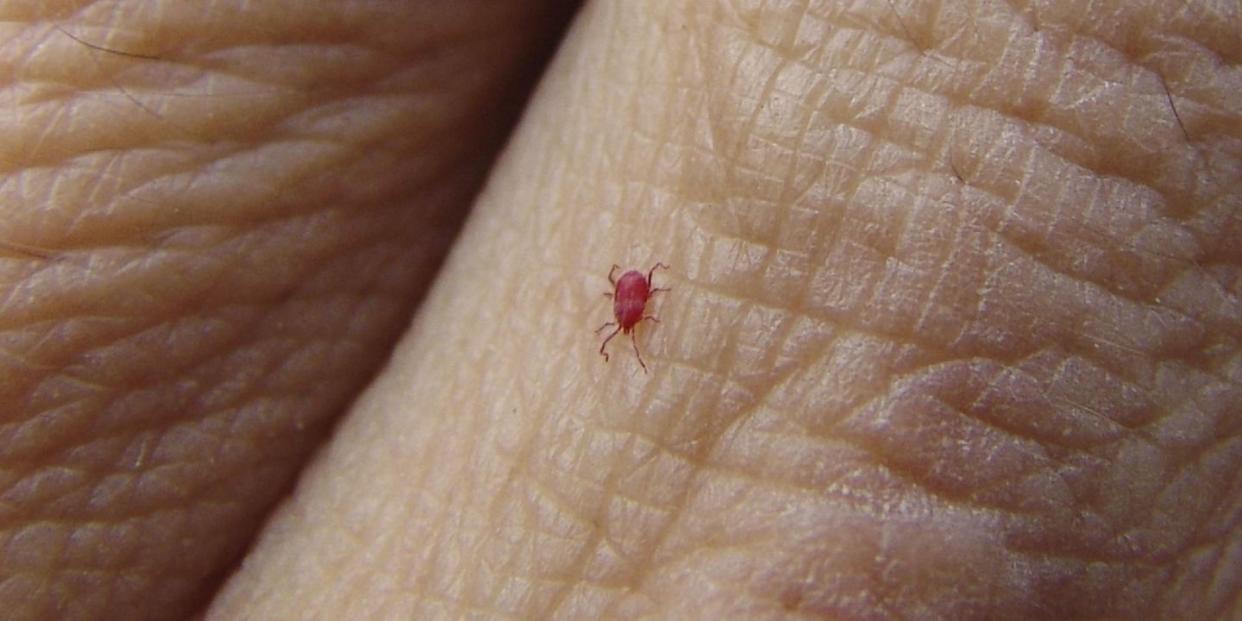How to Get Rid of Chiggers and Soothe Their Bites

Nearly microscopic, pesky chiggers can go unnoticed until they leave a parting gift: Big, angry bumps that itch like crazy. These teeny-tiny mites are closely related to spiders and can appear in grasses and brush across the country, but most commonly find their victims in the Southeast and Midwest. They go by a wide variety of names too: berry bugs, harvest mites, and red bugs to name a few.
Whatever you call them, clearing these parasites from your backyard is easier than you think:
1. ID the chiggers and their bites.
The quickest - albeit most painful - way to identify a chigger problem is by looking at the bites. Chiggers go through four life stages, but only the larvae need to feast on hosts. The juveniles wait for animals or humans to brush against their hiding place, and then latch on.
After a few days, the bugs fall off but leave behind the itchy bumps. The marks usually heal on their own, but the Mayo Clinic recommends scrubbing the affected area with soapy water to remove any stragglers, and soothing itching with calamine lotion ($9, amazon.com) or hydrocortisone cream ($6, amazon.com). Of course, if you're experiencing a severe reaction, seek medical attention.

Photo via Wikimedia Commons
If you're lucky enough to escape welts, Orkin entomologist Chelle Hartzer has another way of identifying a chigger problem: Put a low bowl of water outside and wait an hour. Because chiggers love humidity, you might find tiny, yellow or red dots around the rim of the dish. They're so small however, you might need a magnifying glass to see them.
2. Cut back the brush in your yard.
The best way to get rid of chiggers is to deprive them of their hiding places. Mow the lawn and landscape those bushes. It'll deter not only the bugs but also some of the animals that transmit them, Hartzer says. Clearing tall weeds, grasses, and brambles is a simple but effective way of denying them of the shelter, shade, and moisture they like.
When you do go outside, make sure you wear insect repellent as well. Wearing the right clothing - tucked-in long pants and shirts - can also help keep chiggers off your skin.
3. Don't worry. The welts won't hurt you.
Unlike ticks, chiggers in the United States don't transmit any known diseases. The nymphs and adults don't even bother humans either, choosing to feast on plant material and other insect eggs instead. So although they're annoying and uncomfortable, those red bumps won't last forever.
You Might Also Like


